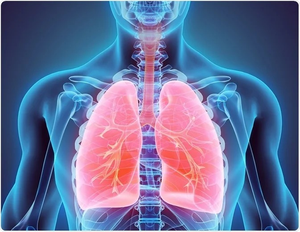New Delhi, 8 April (IANS). UK scientists have found that one in every 3,000 person has a poor gene in the body, which increases the risk of their lung burst (puncture).
Lafra bursting, called pneumothorax in medical language, occurs when the air is leaked in the lungs. This causes the lung to suffer, which causes pain and there is difficulty in breathing.
Scientists at Cambridge University studied over 5.5 lakh people. In this, he found that one in one of every 2,710 to 4,190 has a special type of gene called FLCN in his body, which is at risk of a disease called Burt-Hog-Dubey syndrome.
Burt-Hog-Dubey syndrome is a rare genetic (generation-running) disease. In this, small lumps like tumors are made on the skin, cysts (lumps) are formed in the lungs and the risk of kidney (kidney) cancer increases. But it is not necessarily the reason for every lung burst.
This study, which was printed in a magazine called ‘Thorax’, found that the patients who had a disease called Burt-Hog-Dubey syndrome were 37 percent of the lifestyle of lungs. However, in a large group of people changing the FLCN genes, this danger was reduced to 28 percent.
Talking about kidney cancer, it was up to 32% in people with Burt-Hog-Dubey syndrome, while only 1% in people with this poor genes, but in people without disease.
Professor Marsiniaq of the University of Cambridge said that he was surprised to know that there was no disease but there was no disease, the risk of kidney cancer was very low. This may mean that not only this gene is responsible for the disease, but there may be some other reasons.
The study also revealed that every 200 long and thin teenagers or young men may have trouble having a lung puncture. In most cases this discomfort is cured automatically, or doctors treat air or liquid from the lungs.
If a person’s lung is punctured and does not usually fit in the symptoms of the disease (such as if he is forty years old), the doctors examine his lungs by doing an MRI. If the MRI shows cysts (lumps) in the lower lungs, there is a possibility that the person has a Burt-Hog-Dube syndrome.
Professor Marsiniaq says, “If someone has a Burt-Hog-Dube syndrome, it is important to know, because other people of his family may also be at risk of kidney cancer.”
The good thing is that the problem of lung puncture often occurs 10–20 years before the symptoms of kidney cancer. This means that if the disease is identified in time, then kidney cancer can be caught and cured on time by regular checkup and monitoring.
-IANS
AS/
